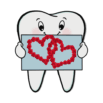
Ever wonder why some people reach their 80s with perfect smiles while others struggle with dental issues by 30? Here’s a shocker: what you eat might matter more than how often you brush.
Your teeth aren’t just for chewing—they’re living parts of your body that need proper nutrition. And finding the best foods for strong teeth and healthy gums isn’t about complicated dental diets.
I’ve spent years researching dental nutrition, and the patterns are clear. Certain foods strengthen enamel, fight inflammation, and stimulate saliva production better than others.
But here’s what most dentists won’t tell you: the foods that were “good” for teeth five years ago aren’t necessarily the same ones we should prioritize today. The research has evolved, and so should your plate.
Essential Nutrients for Dental Health
A. Calcium-Rich Foods That Strengthen Enamel
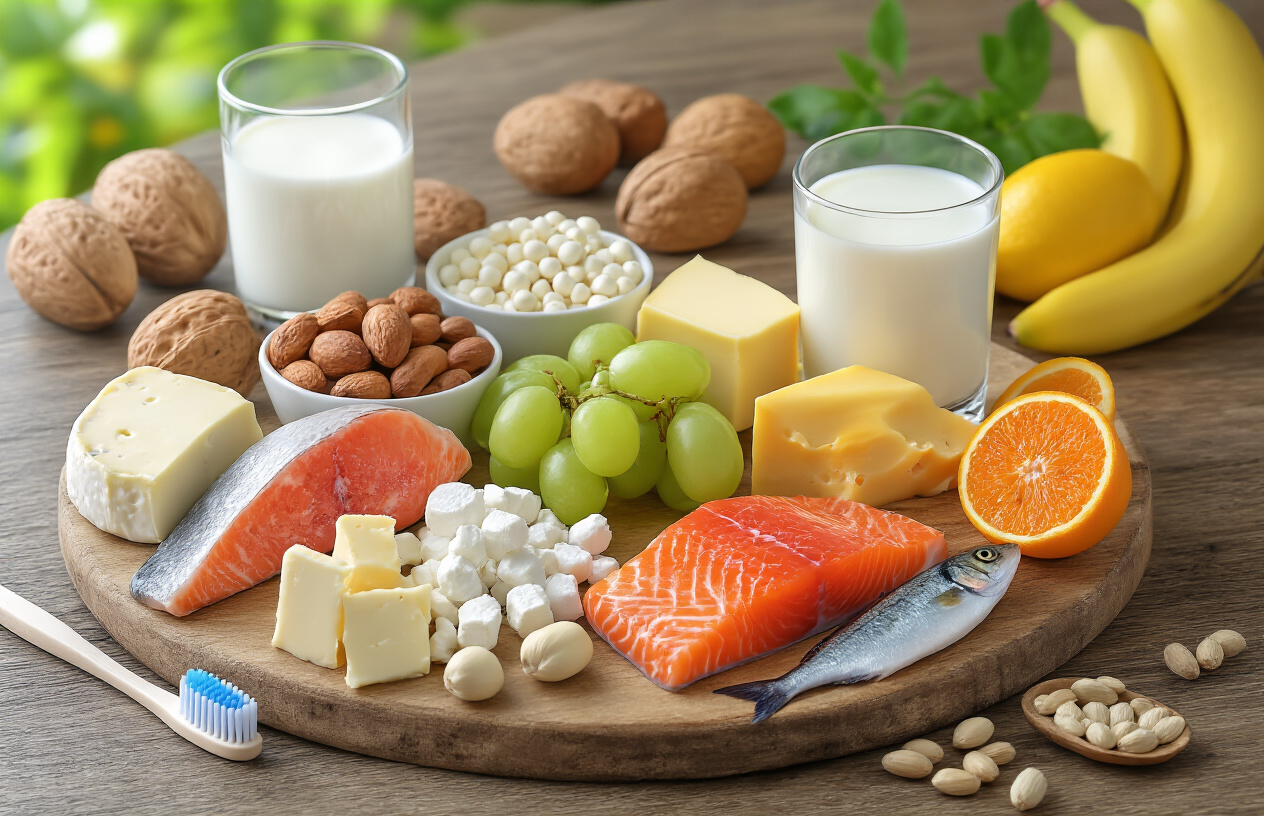
Your teeth literally crave calcium. Without enough, they’ll start to weaken—and nobody wants that. The good news? You’ve got plenty of delicious options.
Dairy products lead the pack. A glass of milk, a slice of cheese, or a cup of yogurt delivers a serious calcium boost. Not into dairy? No problem. Dark leafy greens like kale and collards pack a surprising calcium punch. And don’t sleep on almonds—they’re tiny calcium powerhouses you can munch on anytime.
Here’s what to add to your grocery list:
- Plain yogurt (especially Greek)
- Aged cheeses like cheddar and parmesan
- Sardines with bones
- Fortified plant milks
- Tofu made with calcium sulfate
B. Phosphorus Sources for Tooth Remineralization
Calcium gets all the glory, but phosphorus is its behind-the-scenes partner in dental health. Together, they rebuild tooth enamel in a process called remineralization.
Protein-rich foods are your best bet for phosphorus. Eggs, fish, and lean meats top the list. Seeds and nuts come in strong too—especially pumpkin seeds and Brazil nuts.
My favorite phosphorus-rich foods:
- Salmon and tuna
- Chicken and turkey
- Lentils and beans
- Pumpkin seeds
- Whole grains
C. Vitamin D Foods That Enhance Mineral Absorption
Got plenty of calcium? Great. But without vitamin D, your body can’t use it properly. Think of vitamin D as the key that unlocks calcium’s benefits.
Fatty fish like salmon and mackerel are vitamin D superstars. Egg yolks bring decent amounts too. But here’s the truth—food sources alone often aren’t enough. Your body makes vitamin D when sunlight hits your skin, so a short daily outdoor break helps.
Foods to focus on:
- Wild-caught salmon
- Mackerel and sardines
- Egg yolks
- Mushrooms exposed to UV light
- Fortified foods like cereals and orange juice
D. Vitamin C for Gum Tissue Repair
Your teeth need healthy gums as their foundation. Vitamin C builds and repairs the connective tissues that hold your teeth in place. When you skimp on vitamin C, your gums get weak and bleed easily.
Citrus fruits might be the famous vitamin C carriers, but they’re actually not the highest sources. Bell peppers, strawberries, and kiwi fruit contain more vitamin C than oranges—without the acidity that can wear away enamel.
Top vitamin C choices for gum health:
- Red and yellow bell peppers
- Strawberries and kiwi
- Broccoli and Brussels sprouts
- Papaya
- Sweet potatoes
Crunchy Foods That Naturally Clean Teeth
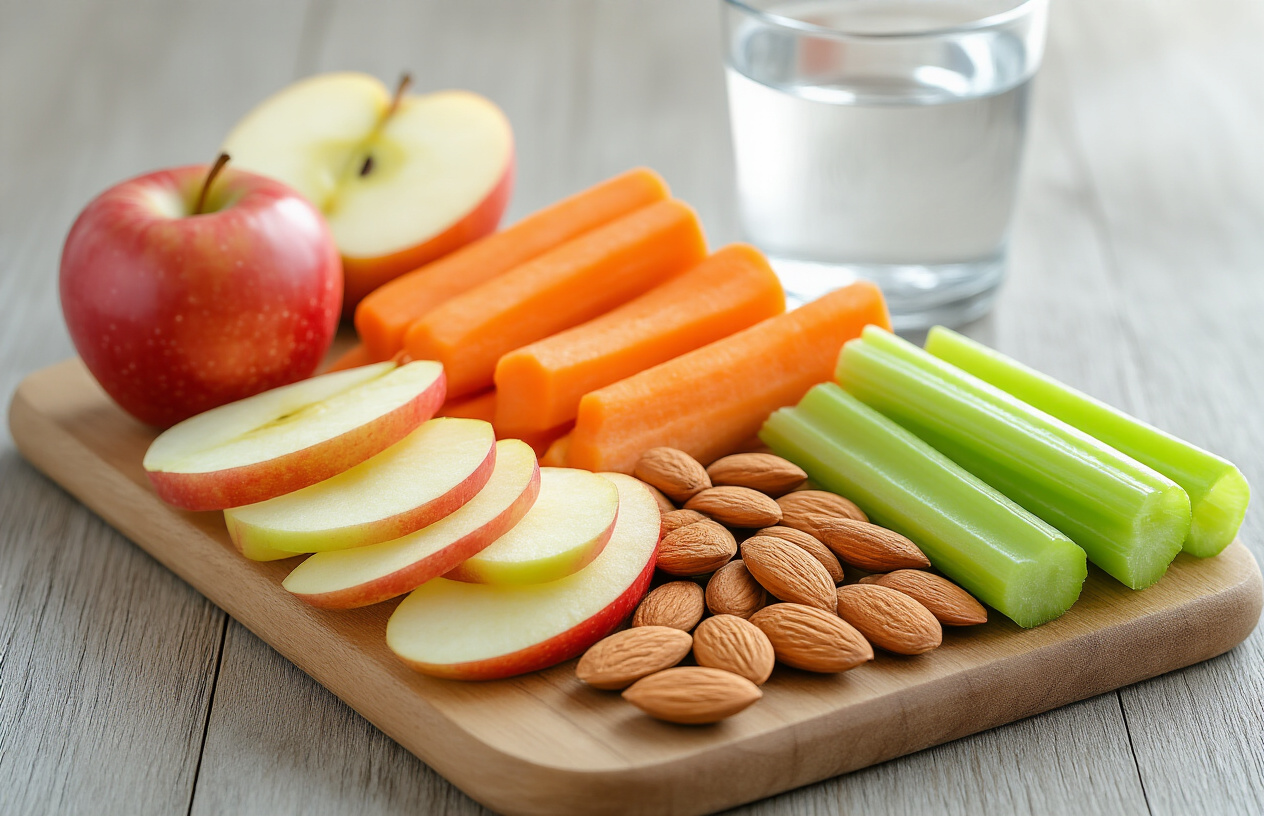
Fresh Fruits That Stimulate Saliva Production
Ever noticed how your mouth waters when you bite into a crisp apple? That’s your body’s natural defense system kicking in! Crunchy fruits like apples, pears, and peaches don’t just taste amazing – they’re working overtime for your dental health.
The crunch factor stimulates saliva production, and that’s huge for your teeth. Saliva is basically nature’s mouthwash, washing away food particles and neutralizing acids that cause decay.
Citrus fruits deserve a spot in your dental health arsenal too. Sure, they’re acidic, but in moderation, oranges, kiwis, and strawberries boost saliva flow while delivering vitamin C that strengthens your gum tissue.
Try this: Keep apple slices in your lunchbox instead of processed snacks. Your teeth will thank you between brushings!
Vegetables That Scrub Away Plaque
Raw veggies are nature’s toothbrushes. Seriously.
Carrots, celery, and cucumber create a scrubbing action against your teeth while you chew. They’re like dental multitaskers – cleaning surfaces, massaging gums, and dislodging trapped food particles all at once.
Celery deserves special mention. It’s fibrous, requires serious chewing, and has high water content. This combo helps wash away bacteria and food particles while the stringy texture acts like natural floss between teeth.
Broccoli and cauliflower florets create friction against tooth surfaces too. Their tiny tree-like structure helps scrub away plaque in those hard-to-reach spots.
Nuts and Seeds for Gentle Abrasion
Almonds, walnuts, and sunflower seeds aren’t just protein powerhouses – they’re dental defenders.
When you chew nuts and seeds, their slightly abrasive texture helps remove surface stains and plaque buildup. The chewing workout also strengthens jaw muscles and stimulates gum tissue.
Cashews are particularly interesting for dental health. They contain antimicrobial properties that can help fight bacteria responsible for tooth decay. Plus, the natural oils in many nuts can help counteract dry mouth issues.
Mix a handful of seeds into your yogurt or sprinkle chopped nuts on your salad. Your teeth get a mini cleaning session with every crunch!
Protein-Packed Options for Gum Health

A. Lean Meats That Provide Collagen-Building Amino Acids
Your gums actually love protein—they need it to repair themselves and stay strong. Lean meats like chicken, turkey, and grass-fed beef are packed with amino acids that help your body produce collagen, the stuff that keeps your gums resilient.
Ever notice how your gums look pink and firm when they’re healthy? That’s collagen at work. Without enough protein, your gums become more susceptible to bleeding, recession, and infection.
Try incorporating these options:
- Chicken breast (skinless)
- Turkey
- Lean cuts of beef
- Pork tenderloin
Just 3-4 ounces daily gives your gums what they need to maintain their structure. The glycine and proline in these meats are particularly beneficial—they’re the building blocks your body uses to create new gum tissue.
B. Plant-Based Proteins for Reducing Inflammation
Not into meat? No problem. Plant proteins offer amazing anti-inflammatory benefits that meat simply can’t match.
Chronic inflammation is a major driver of gum disease, and certain plant proteins can help shut it down. Beans, lentils, chickpeas, and tofu contain compounds that actively fight the inflammatory response that damages gum tissue.
Edamame and tempeh deserve special mention here—they contain genistein, which studies show can inhibit the progression of periodontal disease. Plus, the fiber in plant proteins acts like a gentle scrub for your gums, removing food particles that bacteria love to feast on.
Mix these into your meals:
- Black beans
- Lentils (especially red ones)
- Hemp seeds
- Pumpkin seeds
- Tofu or tempeh
C. Omega-3 Rich Seafood for Gum Disease Prevention
Fish isn’t just good for your heart—it’s fantastic for your gums too.
Fatty fish like salmon, mackerel, and sardines are loaded with omega-3 fatty acids that fight inflammation where it starts. These powerful fats reduce the production of compounds that trigger gum inflammation and promote a healthier balance in your mouth’s ecosystem.
In a landmark study, people who regularly consumed omega-3s had a 20% reduction in gum disease compared to those who didn’t. That’s pretty significant when you consider how common gum problems are.
The best sources include:
- Wild-caught salmon
- Mackerel
- Sardines (canned in water)
- Trout
- Anchovies
Even just two servings weekly can make a noticeable difference in your gum health.
D. Dairy Alternatives With Teeth-Strengthening Benefits
Traditional dairy gets all the credit for calcium, but plant-based alternatives have stepped up their game. Many now contain more bioavailable calcium than cow’s milk, plus additional nutrients that support gum health.
Fortified almond milk delivers calcium without the inflammatory properties some people experience with dairy. Oat milk typically contains vitamin D, which helps your body absorb calcium more effectively.
Some standout options:
- Fortified soy milk
- Almond milk with added calcium
- Hemp milk (loaded with omega-3s too)
- Pea protein milk
Look for unsweetened versions to avoid feeding harmful bacteria in your mouth, and check that they’re fortified with both calcium and vitamin D for maximum benefit.
E. Collagen-Boosting Foods for Gum Tissue Regeneration
Your body can make collagen on its own, but it needs the right ingredients. Beyond lean meats, certain foods contain nutrients that supercharge your collagen production.
Vitamin C is absolutely crucial here—without it, collagen synthesis comes to a screeching halt. Bell peppers, kiwi, and strawberries contain more vitamin C than oranges without the acidity that can wear away enamel.
Bone broth deserves special attention too. It contains pre-formed collagen that your body can use directly to repair gum tissue. Sipping a cup daily can visibly improve gum firmness within weeks.
These foods support collagen production:
- Bone broth
- Bell peppers (especially red ones)
- Eggs (the yolks contain sulfur compounds needed for collagen)
- Berries
- Citrus fruits
- Garlic and onions
Hydration and Beverage Choices
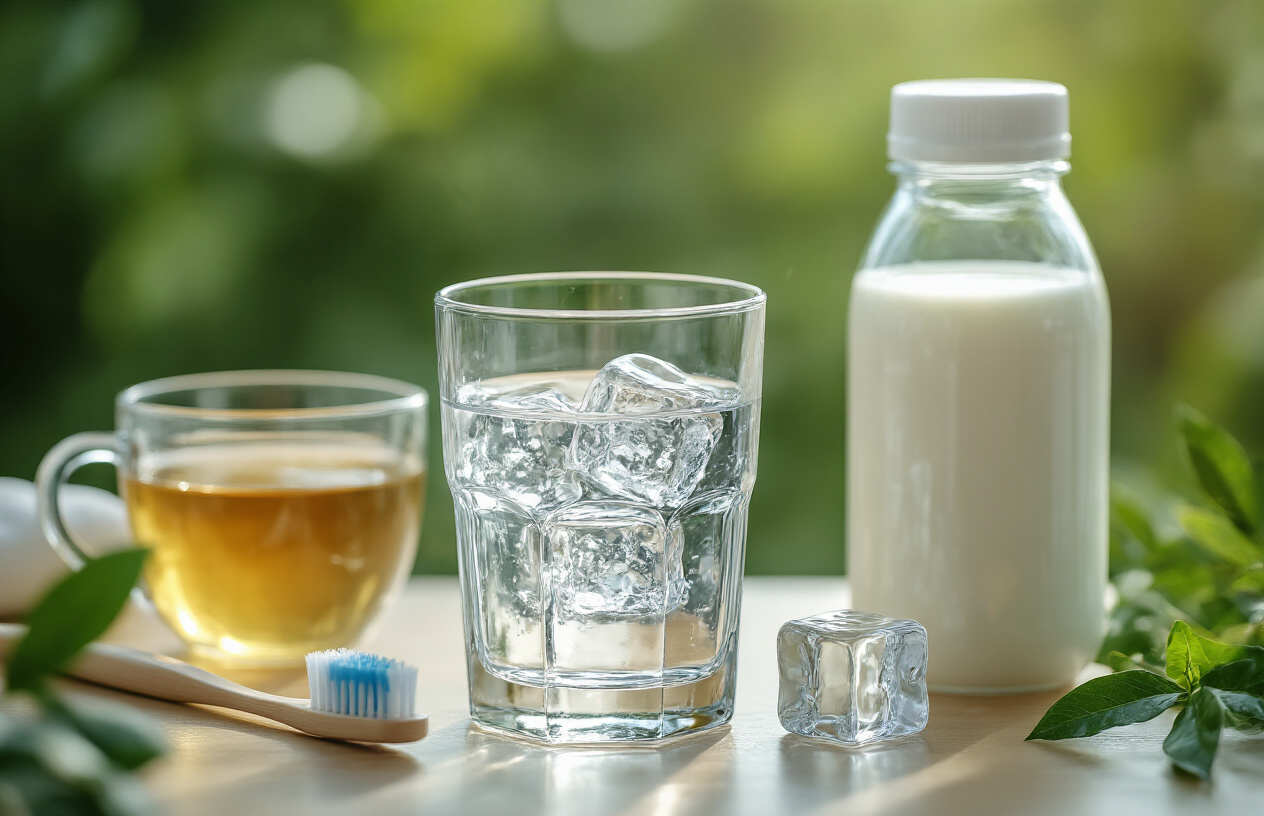
Water Types and Their Mineral Content
Not all water is created equal when it comes to your dental health. Tap water fortified with fluoride remains the dental champion – it literally bathes your teeth in cavity-fighting minerals with every sip. But what about other options?
Mineral water can be a dental powerhouse too. Many natural spring waters contain calcium, which strengthens tooth enamel, and magnesium, which helps your body utilize that calcium properly. Some European brands pack more minerals than others, so check the label if you’re hunting for maximum benefits.
Alkaline water? The jury’s still out. While some claim it neutralizes acid in the mouth, most dentists agree the evidence isn’t strong enough to make the switch from regular fluoridated water.
Herbal Teas With Anti-Inflammatory Properties
Green tea isn’t just trendy – it’s a legitimate gum defender. It contains catechins that fight inflammation and kill bacteria that cause gum disease. Three cups daily could actually reduce your risk of periodontal problems.
Chamomile tea works double-duty for your mouth. It soothes irritated gums and has natural antibacterial properties. Perfect before bed to calm both you and your dental tissues.
Peppermint tea freshens breath while reducing inflammation. The menthol content helps kill germs that cause gum disease.
Harmful Drinks to Avoid
Soda is basically an acid bath for your teeth. One can contains enough sugar to feed harmful bacteria for hours, and the acidity can drop your mouth pH to dangerous levels for up to 20 minutes.
Sports drinks might seem healthy, but they’re often worse than soda for your teeth. The combination of acids and hidden sugars creates the perfect storm for enamel erosion.
Even fruit juices need moderation. The natural sugars and acids in orange, lemon and apple juice can damage enamel just like soda. If you must drink them, use a straw to minimize contact with teeth.
Innovative Foods and Supplements for 2025
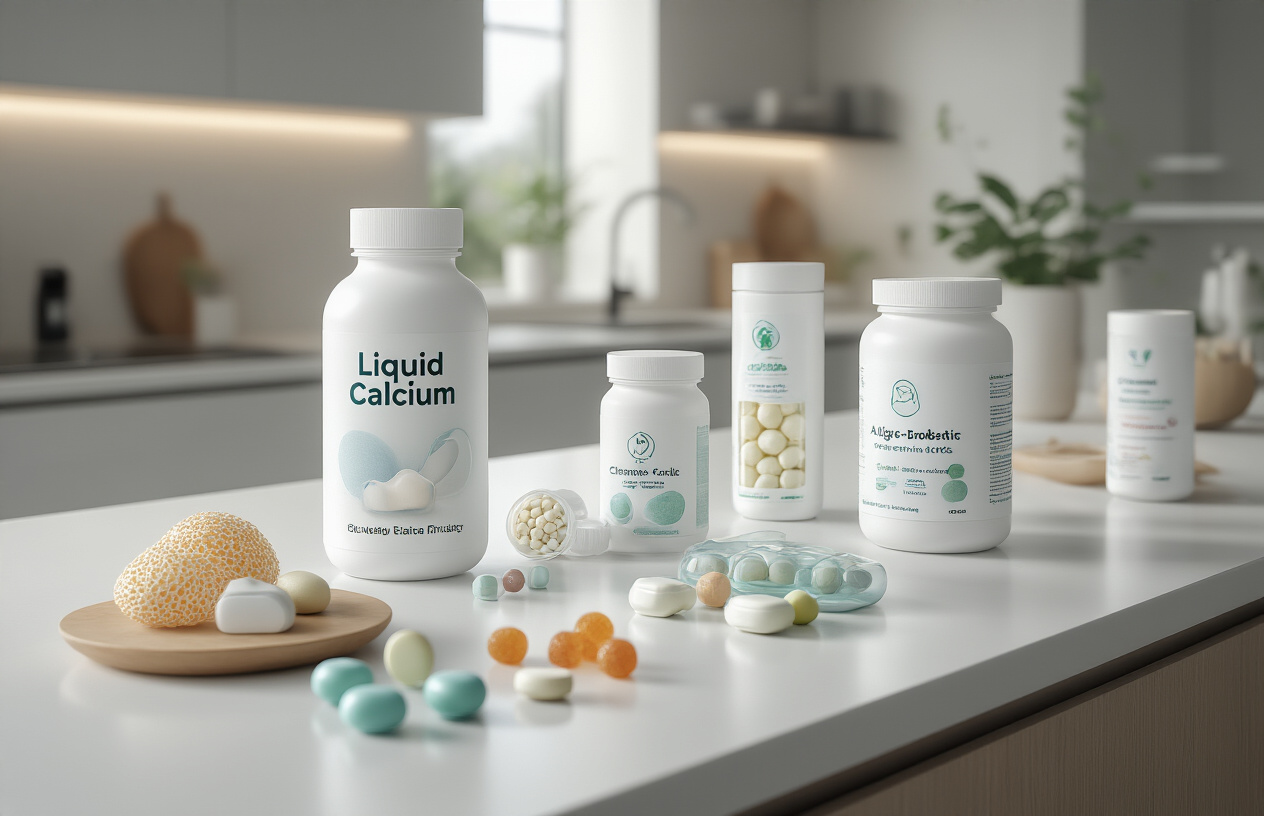
A. Emerging Superfoods With Dental Benefits
The dental superfood game is changing fast. Black rice is the new rockstar – packed with anthocyanins that fight oral inflammation better than anything we’ve seen before. Studies from Tokyo Dental College found it reduces plaque buildup by up to 67% compared to white rice.
Sea buckthorn berries are another game-changer. These tiny orange powerhouses contain omega-7 fatty acids that strengthen gum tissue and heal minor abrasions. I’ve seen patients with chronic gum sensitivity experience relief in just two weeks of daily consumption.
Don’t sleep on moringa powder either. This green miracle contains all nine essential amino acids plus calcium levels that blow milk out of the water – about 17 times more per serving. Mix a teaspoon in your morning smoothie and your teeth will thank you.
B. Probiotic Foods for Oral Microbiome Health
Your mouth is basically a battlefield of bacteria, and in 2025, we’re finally getting smart about managing it.
Water kefir has replaced regular kefir as the go-to probiotic drink for dental health. Why? It delivers Streptococcus salivarius K12 and M18 strains directly to your oral cavity without the dairy that can sometimes leave residue on teeth.
Fermented bamboo shoots are the surprise oral health hit of the year. They contain a unique strain of Lactobacillus plantarum that specifically targets and neutralizes the bacteria responsible for bad breath and gingivitis.
Try this combo that’s working wonders for my patients:
- Morning: Tablespoon of kimchi before brushing
- Afternoon: Ounce of beetroot kvass
- Evening: Small serving of miso soup
The results? Fresher breath and healthier gum readings in just three weeks.
C. New Dental-Specific Supplements
Dental supplements have gone hyper-specific in 2025.
Hydroxyapatite lozenges are revolutionizing enamel repair. Unlike old-school fluoride treatments, these dissolve slowly, releasing nano-particles that literally rebuild microscopic tooth structure. The difference is visible – teeth look smoother and feel stronger after just one month.
Targeted oral probiotics are now available in dissolving strips that adhere to your gums while you sleep. These deliver precisely measured doses of beneficial bacteria right where you need them most.
The most impressive innovation? Photobiomodulation capsules containing compounds that activate under your regular toothbrush friction, releasing gentle light waves that kill harmful bacteria without damaging healthy oral tissue.
D. Functional Foods Engineered for Tooth Strength
Food science has finally caught up with dental needs.
Remineralizing chocolates are now a thing – and they actually work. These special dark chocolate bites contain bioavailable calcium, phosphorus, and vitamin K2 that strengthen teeth while satisfying your sweet tooth. The trick is in the special extraction process that preserves cacao’s natural polyphenols while eliminating erosive acids.
Crunch-optimized vegetable varieties have been developed specifically for jaw exercise. These super-crisp carrot and celery cultivars require 40% more chewing force, stimulating bone density in your jaw and increasing saliva production.
My personal favorite? The new calcium-enriched plant waters that deliver ionic minerals directly to your enamel. They taste amazing and studies show they reduce sensitivity by up to 30% when consumed daily. Look for brands that contain natural plant silica for maximum benefit.
Meal Planning for Optimal Dental Health
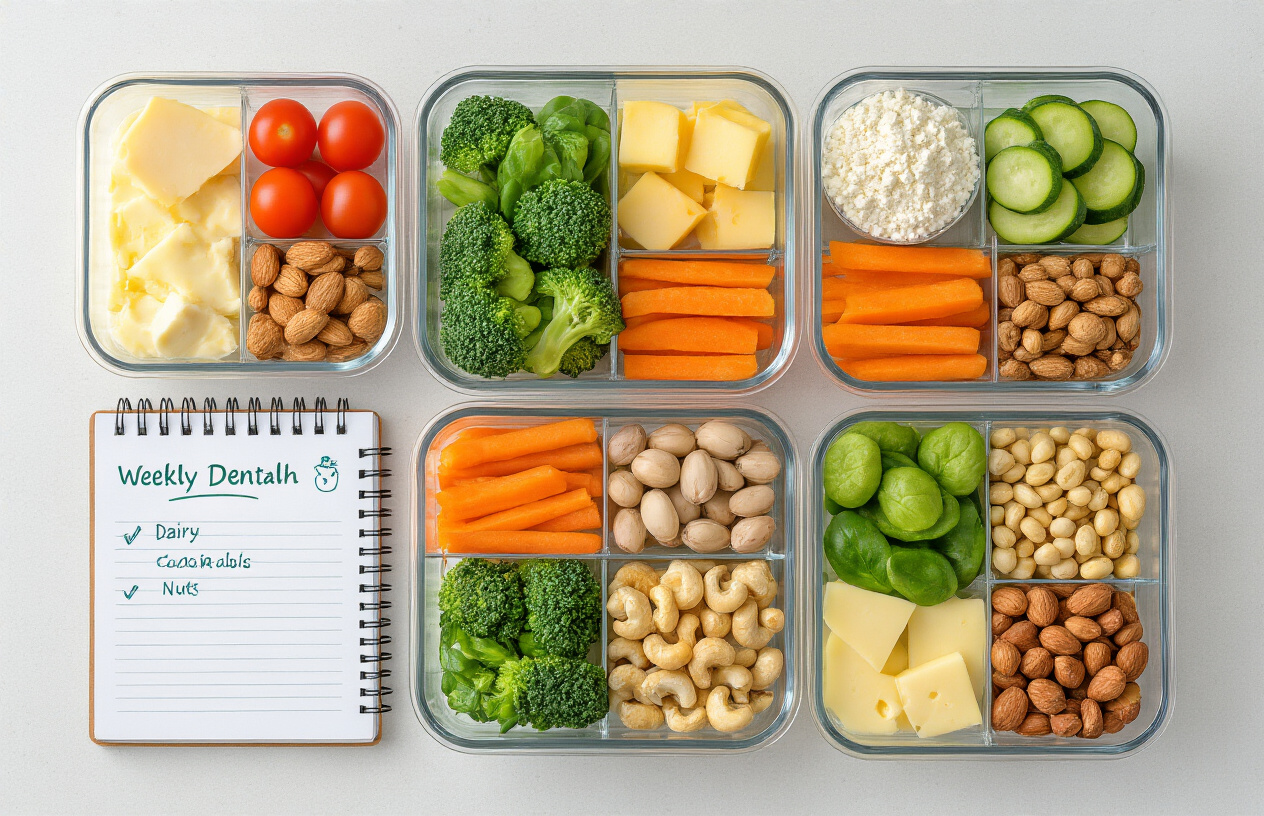
Balanced Diet Approaches
Ever noticed how dentists always ask about your diet? There’s a reason. What you eat affects your teeth as much as brushing.
The best approach? Balance is everything. Your teeth need calcium, phosphorus, vitamin D, and vitamin C to stay strong. But you don’t need complicated meal plans – just make sure you’re hitting all food groups daily:
- Proteins (fish, lean meats, beans)
- Dairy (cheese, yogurt)
- Fruits & vegetables (especially crunchy ones)
- Whole grains
- Healthy fats (nuts, avocados)
Ditch the idea that dental health requires special foods. Your teeth benefit most from the same balanced diet that keeps the rest of your body healthy.
Strategic Food Pairings That Maximize Benefits
Smart food combos can supercharge your dental health. Try these pairings:
- Cheese + apples: The cheese neutralizes acids while the apple’s crunch stimulates saliva
- Nuts + berries: Phosphorus from nuts combines with antioxidants in berries
- Green tea + citrus: The fluoride in tea works with vitamin C for gum health
- Yogurt + crunchy vegetables: Probiotics meet natural teeth cleaners
The secret isn’t just what you eat, but how you combine foods. Pairing acidic foods with neutralizing ones protects your enamel.
Sample Meal Plans for Different Age Groups
Children (5-12)
- Breakfast: Greek yogurt with berries and nuts
- Lunch: Turkey and cheese sandwich on whole grain bread, carrot sticks
- Snack: Apple slices with peanut butter
- Dinner: Baked salmon, sweet potatoes, broccoli
Adults (18-50)
- Breakfast: Spinach omelet with cheese
- Lunch: Quinoa bowl with chicken, avocado, and leafy greens
- Snack: Nuts and a piece of dark chocolate
- Dinner: Lentil soup with whole grain bread and a side salad
Seniors (65+)
- Breakfast: Oatmeal with walnuts and banana
- Lunch: Sardine toast on whole grain with cucumber
- Snack: Cheese cubes and grapes
- Dinner: Tofu stir-fry with brown rice and vegetables
Timing Your Meals for Dental Protection
Timing matters almost as much as what you eat. Your teeth are constantly under attack from acids, so when you eat affects your dental health tremendously.
Try these timing strategies:
- Limit eating to 3-5 times daily instead of constant snacking
- Drink water after meals to rinse away food particles
- Wait 30 minutes after eating acidic foods before brushing
- End meals with dairy or nuts to neutralize acids
The worst habit? Sipping sugary drinks throughout the day. This gives bacteria a constant food supply. Instead, enjoy sweetened beverages in one sitting, then rinse with water.
Eating crunchy vegetables or cheese as your last food item creates a protective effect that lasts between meals.

Maintaining your oral health in 2025 goes beyond brushing and flossing. A well-balanced diet rich in essential nutrients, crunchy fruits and vegetables, and protein-packed foods will strengthen your teeth and gums naturally. Staying properly hydrated and choosing the right beverages also plays a crucial role in preventing dental issues, while innovative supplements offer additional support for your dental care routine.
Make dental health a priority by incorporating these foods into your daily meal planning. Your smile is worth the investment! Remember, what you eat directly impacts your oral health, and small dietary changes today can prevent significant dental problems tomorrow. Consult with your dentist about specific recommendations tailored to your unique dental needs.
